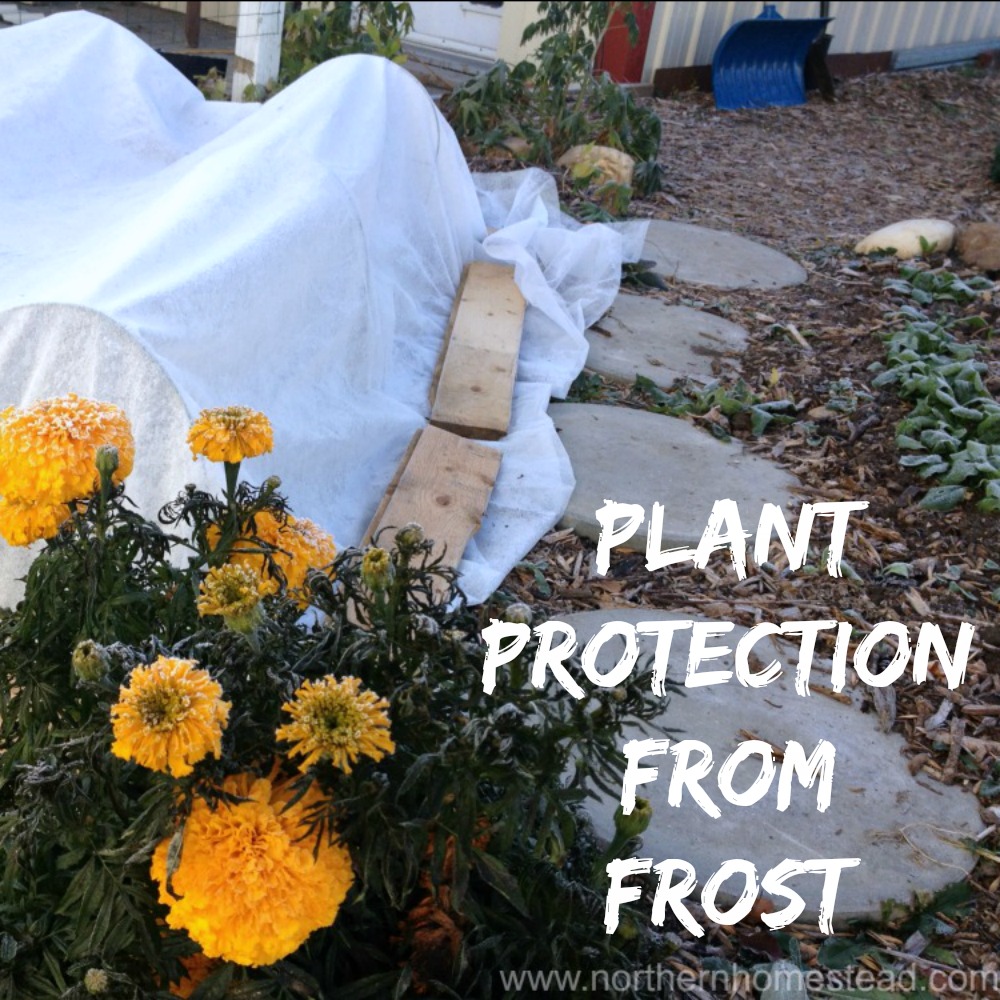
Plant protection from cold and frost is an important subject for cold-climate gardeners. There can always be another frost after the “last day of frost” and before the “first day of frost”. What are some easy methods to extend the growing season of the annual vegetable garden and grow healthy plants despite cold and frost?
Plant protection from frost is much easier in spring when plants are small, which is one of the reasons we like to start things early, read more about it in the article: When to plant what. Young plants are also more frost tolerant than mature ones. It is worth it to embrace the cold spring challenge.
Also in late summer/early fall, we want to be able to protect plants from frost to give them more time to mature.
What is frost
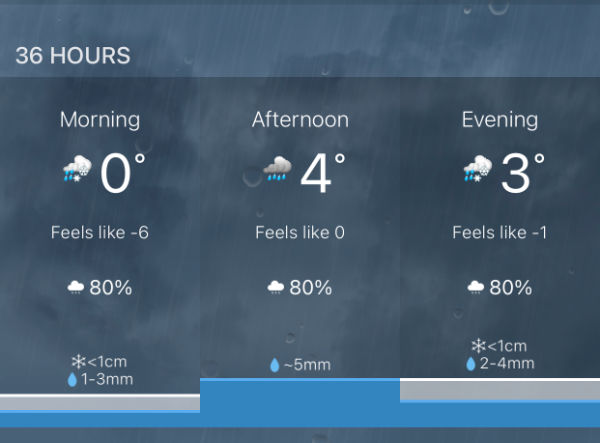
When the temperature of the air about 4 feet above the ground surface falls below the freezing point of water (0°C, 32°F) it’s considered to be freezing of frost.
In a gardening situation, however, we also have to consider ground frost where frost is only just above the ground but the air higher up is not freezing just yet. In the weather forecast at this point, there may or may not be a frost warning, but just a few degrees above freezing. For tender plants, this might be enough to damage or kill them.
During a cold night, frost might only come in lower areas because frost tends to fall or flow like a river in lowland areas.
The duration of the temperature drop will also make a difference. A short dip into freezing will not do as much damage as a prolonged cold period.
Calm, clear spring or fall nights often bring frost. However, on the other hand, prolonged rainy and overcast weather just above the freezing point can damage heat-loving plants and lead to rotten seeds.
Not all plants need protection from frost
Generally speaking, annual plants are divided into two categories, heat-loving, and cold hardy. Gardeners often talk about winter and summer crops. Growers in the south grow summer crops in the summer and winter crops during the winter months, hence the name.
Cold weather plants are frost tolerant and do not need protection from frost until about -2 °C (28 °F). Some can withstand even more. Crops like peas, the whole cabbage family, salad greens, radish, carrots, and beets do not mind a bit of frost. Kale is fine till about -10 °C (14°F), and spinach continues to grow even after -40!
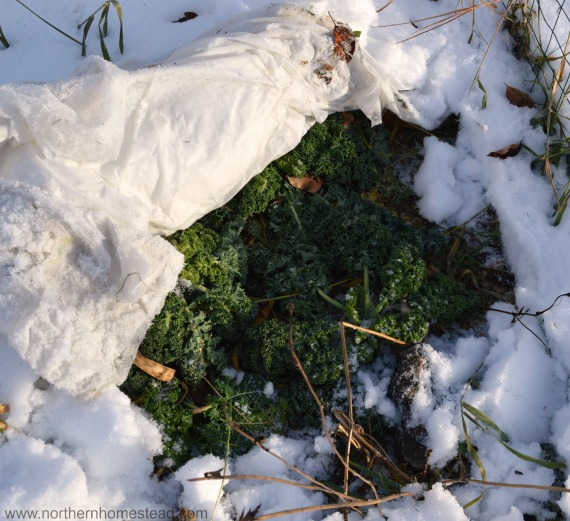
Summer crops, on the other hand, do not tolerate any frost. The most sensitive are the cucurbitaceae plants: cucumber, squash, pumpkin, zucchini, watermelon, and other melon varieties. These plants need protection before it even freezes because the slightest frost can severely damage or even kill the plants.
Nightshade family plants are summer crops as well. The most known are tomatoes, peppers, eggplants, and potatoes. A light frost will damage them, but might not kill the plant completely. If in doubt, it is always better to give them protection.
Beans, corn, and sweet potatoes are also summer crops.
Read more about how different plants react to frost here. With that knowledge, you can plant frost-resistant plants in times when there is a danger of frost and keep plant protection work to a minimum.
See when to plant what to avoid losing tender plants, but still get an early harvest from plants that don’t need as much protection.
Using microclimates to protect plants from frost
As we already have said frost usually either flows like a river or falls like rain. It most often occurs on calm, clear nights.
Having this in mind avoid planting summer crops, or heat-loving plants in low areas, raised beds are a better choice. Plants in low spots in the garden will have to deal with cooler temperatures. Read more about microclimate here.
Putting the plant under a roof or overhang can make a big difference for pots or containers.
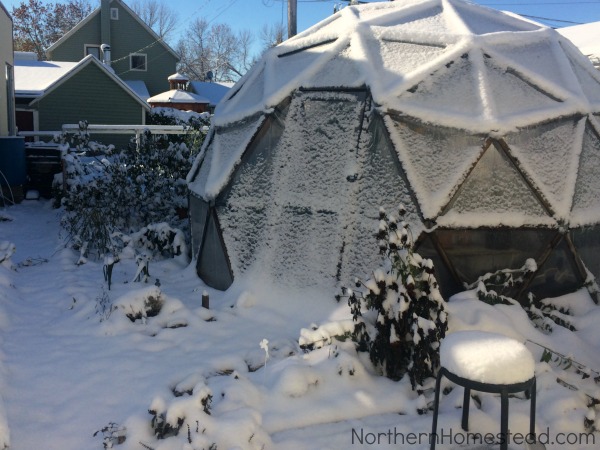
A greenhouse or tunnel covered with greenhouse poly will give you about 2 degrees at night. Different covers may give different results, also the size of the structure matters. Measuring your exact protection can help to plan ahead. Do not think that the greenhouse will give you all protection needed, it most likely will not. We use thermal mass and a heat exchange that helps to keep the greenhouse from freezing. In this post, we explain how it works.
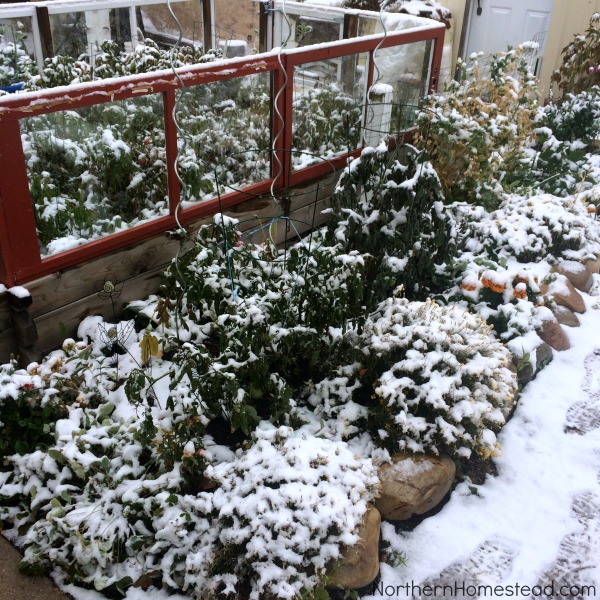
For winter crops snow is natural frost protection. It covers the plants gently and keeps the ground from freezing. However, snow will not protect heat-lowing summer crops.
Plant protection from fros
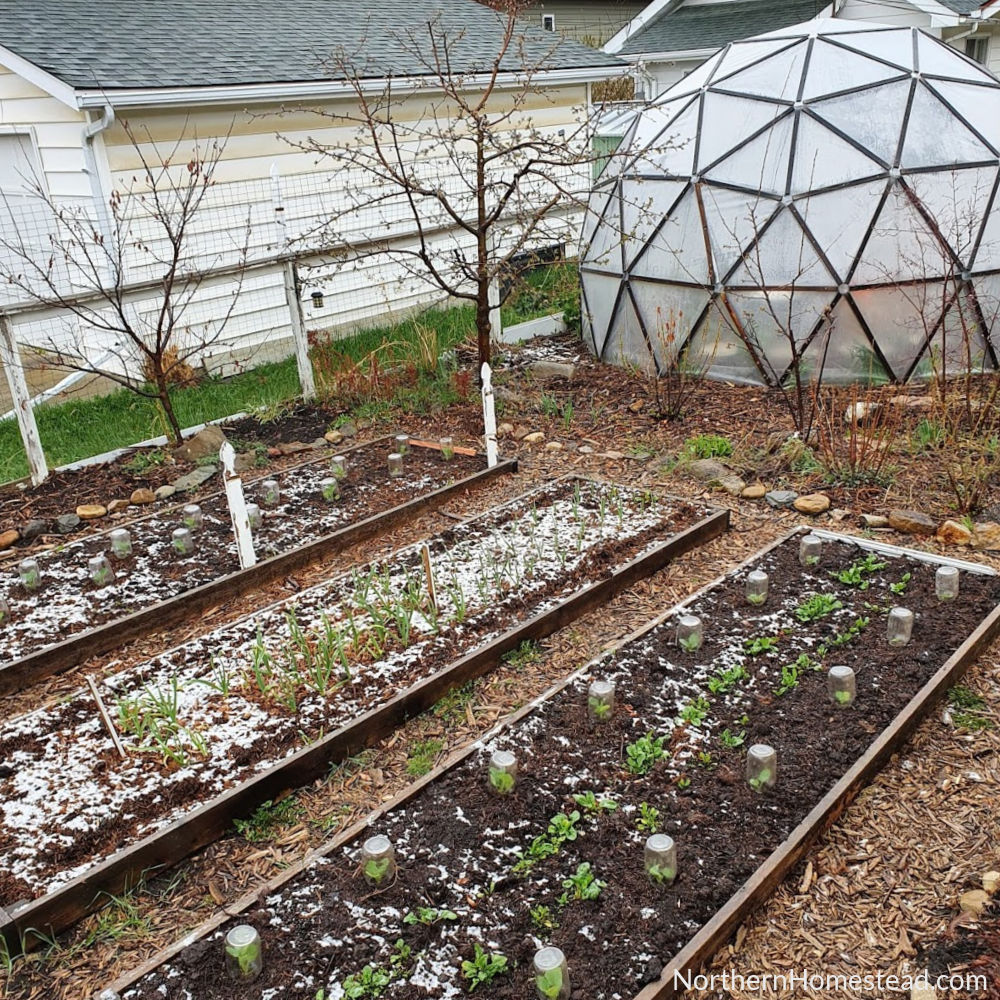
Common plant protection from frost are: a cold frame, glass jars, milk jars, “Hot caps”, frost blanket, bed sheets, … the list goes on.
When covering the plant, keep in mind that the plant has no heat in itself, the warmth comes from the ground. To cover as much ground as you can provide the plants with more warmth.
When using an old bed sheet or blanket, you want to take it off in the morning so the sun can warm up the plant.
A bucket, pail, or rubber container can all be placed over plants for a short period. We explain more of this in our article: Blizzard conditions in the garden.
Plastic is our last choice when it comes to frost protection. For one it does not give a whole lot of protection, but more importantly, it leads to overheating really fast. Use with caution, only if you know you can be there to uncover the plants as soon as the sun comes out.
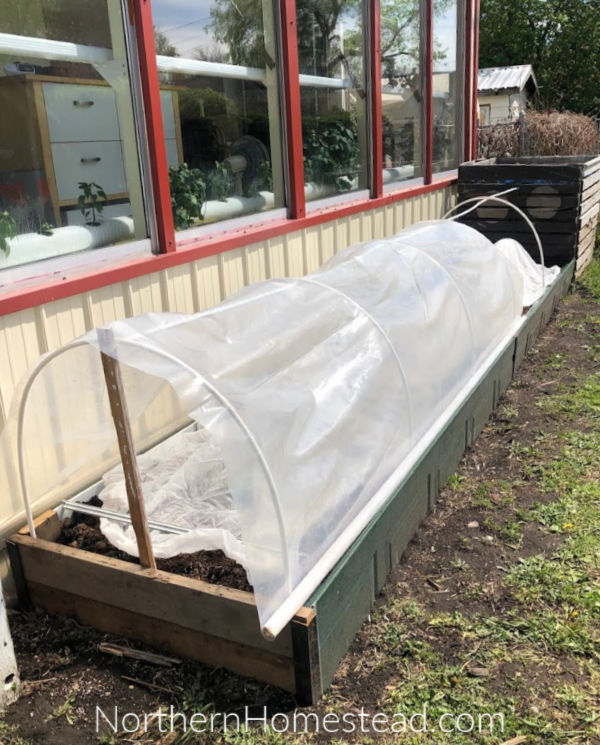
Plastic can be used with hopes. It is better to leave the ends open (Prevent overheating), and use an additional layer of row cover inside the hope for more protection (see picture).
Frost blankets and glass jars are our favorites frost and cold protection. Let us take a closer look at them.
Plant protection from frost with a blanket
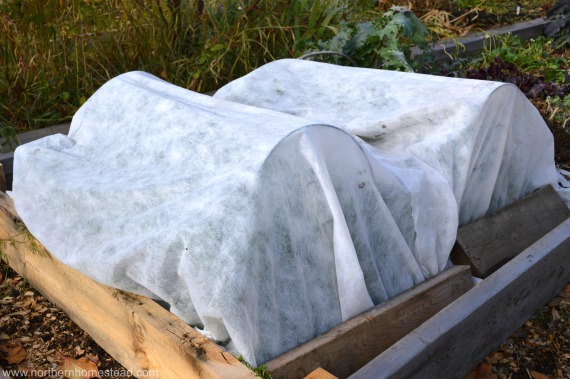
A Plant Protection Blanket or also called Floating Row Cover is a non-woven garden fabric cover that is reusable. It is ultra-light and allows light, water, and air to pass through, and can be left on for a longer period as needed.
A Floating Row Cover comes in different thicknesses and acts as a frost blanket and some wind protection. It also can provide organic insect control, traps heat and moisture to produce bigger, better, and earlier crop yields. It is hands down one of our favorite products in a cold climate garden.
Frost blankets are lightweight and can just be put over the plants with or without any support wiring. You will have to weigh them down so the wind does not blow them away. The Floating Row Cover can be left on all day since it allows air circulation and light – plants will not cook under them.
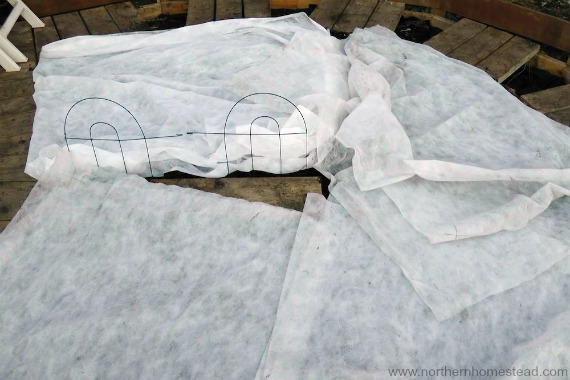
A Plant Protection Blanket used in a greenhouse would double the protection. Since there is no wind in a greenhouse it makes for a perfect way to grow plants early or in milder climates even all year long.
Frost blankets are a simple way to protect whole rows or grow beds.
Tomato or pepper plants can be easily wrapped in a frost blanket using a tomato cage and some clothespins. It also makes a great ‘roof’ for a cold frame.
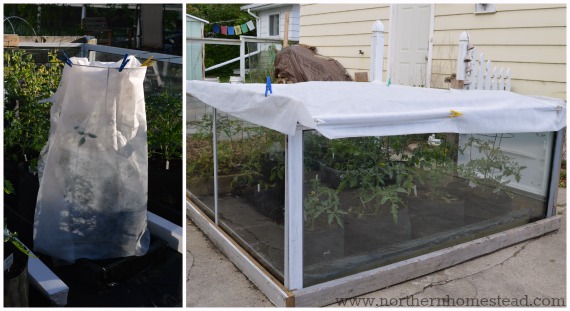
It is just like with us, we are warmer if we wear layers, so you can cover plants in layers, too. A frost blanket is so light-weighted that two to three layers.
Remember, whatever cover you are going to use, the cover does not have any heat in itself. The heat comes from the ground that is still warm from daytime. So cover as much ground as possible to give the plants access to the warm ground. If the temperature drops really low, string lights can be used under the blanket to give some heat.
Plant protection from frost with glass jars
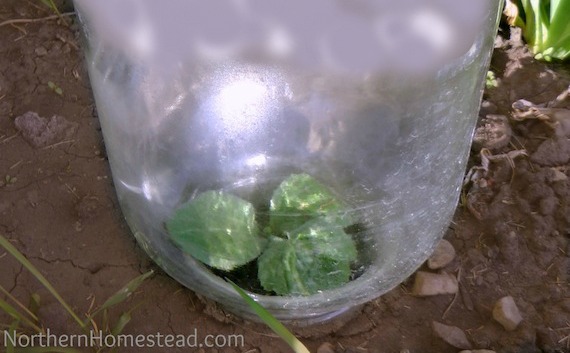
To protect plants with jars or glass cloches is very old-fashioned. It is not very practical for commercial growth, but for a home garden, it is great. Glass jars are thicker than plastic or frost blankets and give more protection. Also, glass jars are not so sensitive to wind, an advantage over milk jars.
Under the glass jar, a microclimate is created, and if the weather gets warmer than expected it starts to build up condensation and “rains” in there – a fun thing to watch. There is not so much danger to overheat the plant, even in fool sun, the jars stay cool to touch. However, if the weather gets hot, the jar needs to be removed, otherwise, you might cook the plant.
Glass jars can also be used for spring seed starting. Read more about the cold spring challenge here.
Jars are my favorite way to protect single plants, like early cabbage seedling, zucchini, or cucumber. On very cold nights, it is easy to give the jars a second layer of frost protection with a blanket or even a bucket on top of the jar.
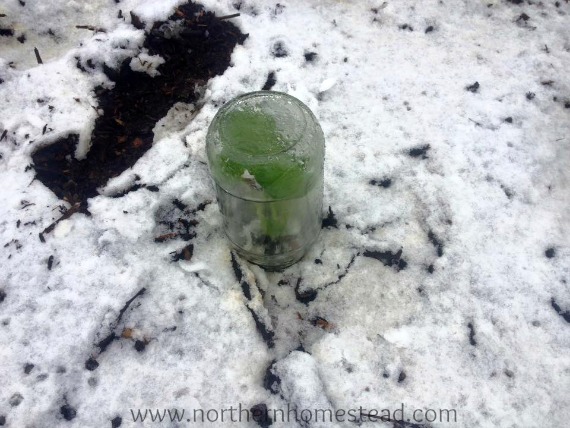
Glass jars are also great for protecting seedlings from sudden, wet, spring snow. Spring snow is not unusual in a cold climate. Seedlings that can break from the weight of the snow, like my Brussels sprouts, can be easily protected with a glass jar over them.
5 things to know about plant protection from frost
- Winter crops are more frost tolerant, summer crops need protection.
- Watered plants are more frost resistant. Water the plants before the frost or in the morning after before the sun comes out.
- Cover plants before the frost with whatever you have on hand, so the frost can not drop on them.
- When you cover the plant make sure to cover as much ground as possible to give the plant access to the ground heat.
- Cover in layers. It is just like with us, we are warmer if we wear layers.
Inspiring books for winter gardening:
We invite you to subscribe to Northern Homestead and follow us on Instagram, Facebook or Pinterest for the latest updates.

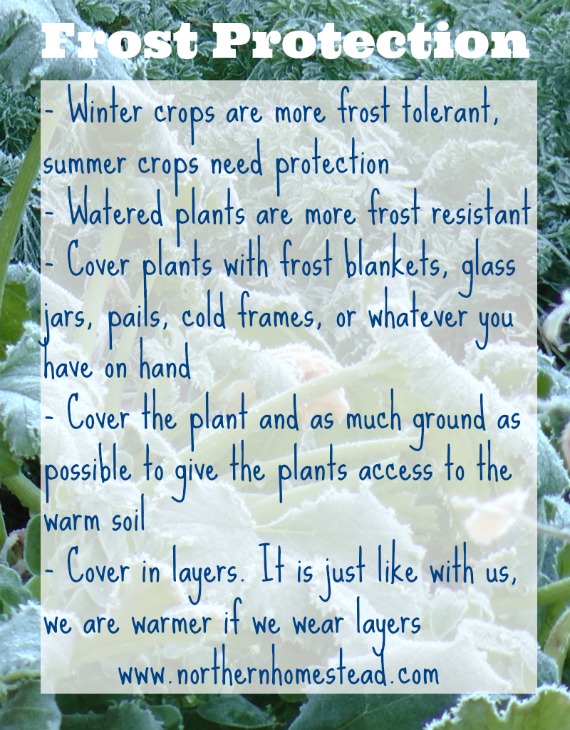



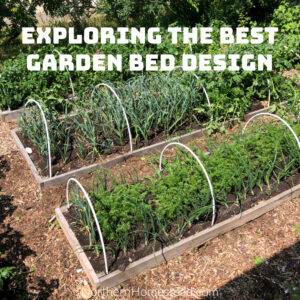
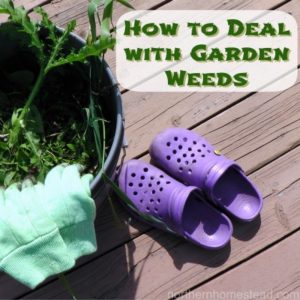
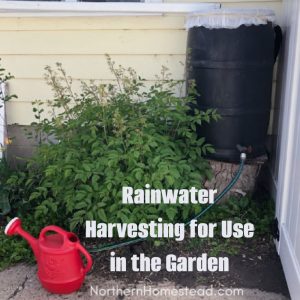
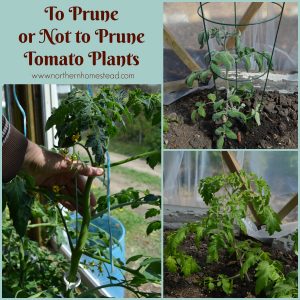
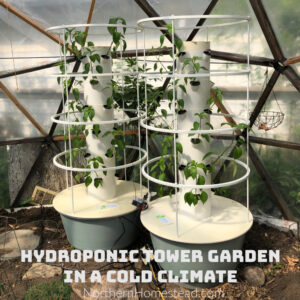
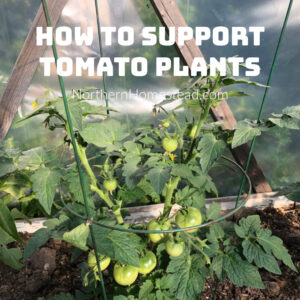
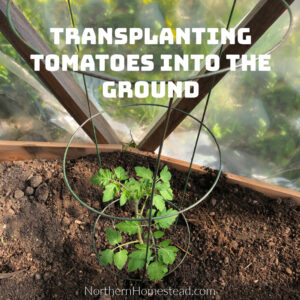
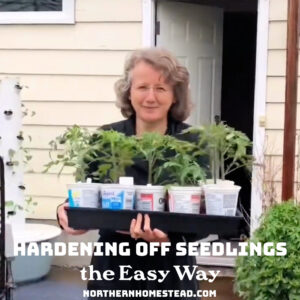
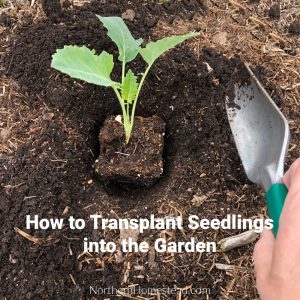
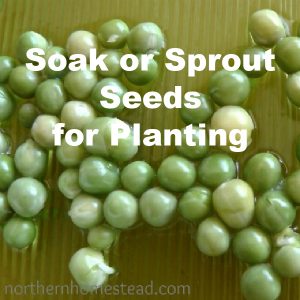

Here in the deep South, our winter’s are more mild but plant protection is still necessary. I love greenhouses too! All good things.
I’ve never heard of frost blankets. I’m going to have to look for some. I usually just grab whatever extra blankets we have to use the few times it frosts here. Last year I tried some ag bags and tarp – bad idea.
I use whatever blankets in the fall sometimes too, but frost blankets are better if you have to leave them on for longer.
Goodness – that is a lot of work, but so great you have blankets to keep them safe. I just love your domed green-house! ~Renee
Yes, growing in Alberta is not an easy task, but worth it.
That’s quite the process! WOW! I’m not sure I could do all that!
It sound hard, and it can be, but in overall I love gardening, and frost is just part of our northern experience 😉
I always learn so much when I read your blog posts! I never thought about using jars to protect plants. Great ideas!
Aww, thank you Alli. I enjoy reading your blog too.
I LOVE your greenhouse! Very cool (no pun intended). I’ve seen people use plastic jugs for cover, but never thought about glass jars. Kudos!
Glass works better because it isolates better. And thank you, A geodome greenhouse is great!
I am learning so much from your blog.. thank you. I am new to the gardening experience as we moved here to the Northeastern (Front Range) part of Colorado from the very hot climate of the Mojave Desert in California (summer temps can reach 120*F) where we lived for 30+ years.. We very quickly made a sort of cold frame out of our raised beds this year to protect our late tomatoes from an unexpected early frost and used plastic sheeting.. what a horrible idea that was.. everything inside turned to mush.. literally.. we ended up pulling all the green tomatoes and finished ripening them in a sunny window, but lost a lot.. to much. With nothing left for preserving this year.. I am so disappointed again as last year we started early (our first year) and suffered from Enz-Rot on everything, which I am told is caused from a lack of calcium in the soil.. I will be putting our raised-beds to bed this weekend with lots of coffee grounds, lawn-leaf mulch and hay and doing a ton of research over the winter months so that hopefully we can have better success next year.. with our luck we will have to put off growing as we have a huge move planned providing we find the right property for our new homestead soon… I will be keeping an eye on your blog for articles this winter to see if there is anything I can use to help us with our garden next spring… thank you all and Blessing to everyone from Northeastern Colorado (zone 5)
Growing in the cold is challenging. It often takes up to 3 years to get a garden going and build up a good soil, so do not gave up to soon.
We have a home in Los Angeles and another at just over 5,000 feet east of L.A. We have a garden there in summer. I have collected bell jars (all sizes) for years and wonder if they can be used to overwinter plants or to protect plants in Spring after we THINK the snows are gone (but sometimes aren’t). Can they be left out all winter in the garden or a shed without fear of freezing temps breaking them? Most of mine are not really old, so how do I make sure they are tempered? Are rough areas or bubbles enough to look for? My newest one is pretty thick and hasn’t a blemish or bubble in it. It was in an antique store but it’s obviously not an antique. It is gorgeous, and if it breaks, so will a bit of my heart. Thanks for your expert advice. Linda Adams
I presume that you are referring to glass jars. Glass jars can be fragile, but if they are empty, there is no risk of breaking through frost that I know of. The only time when there is a danger of them breaking is if you fill a cold jar with hot liquid. or expose them in any other way to extreme temperature change. Hope this helps.